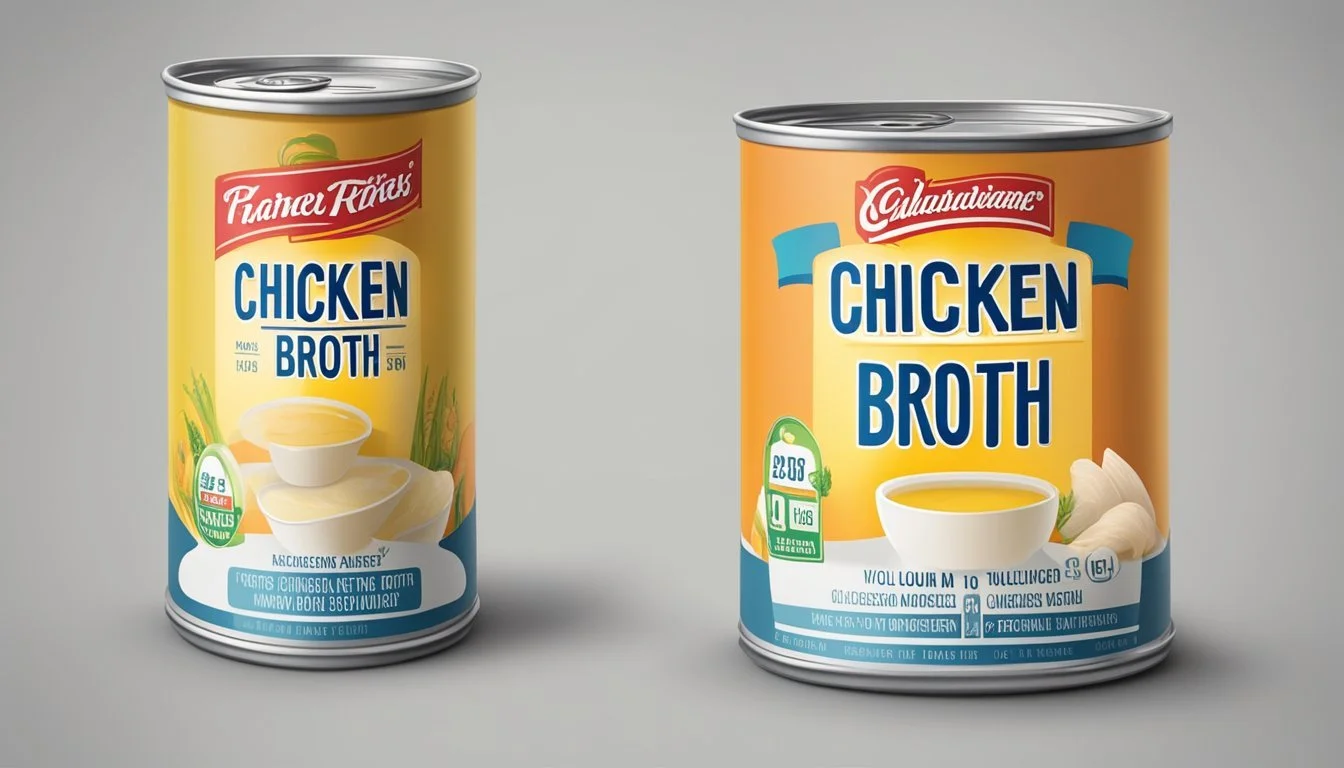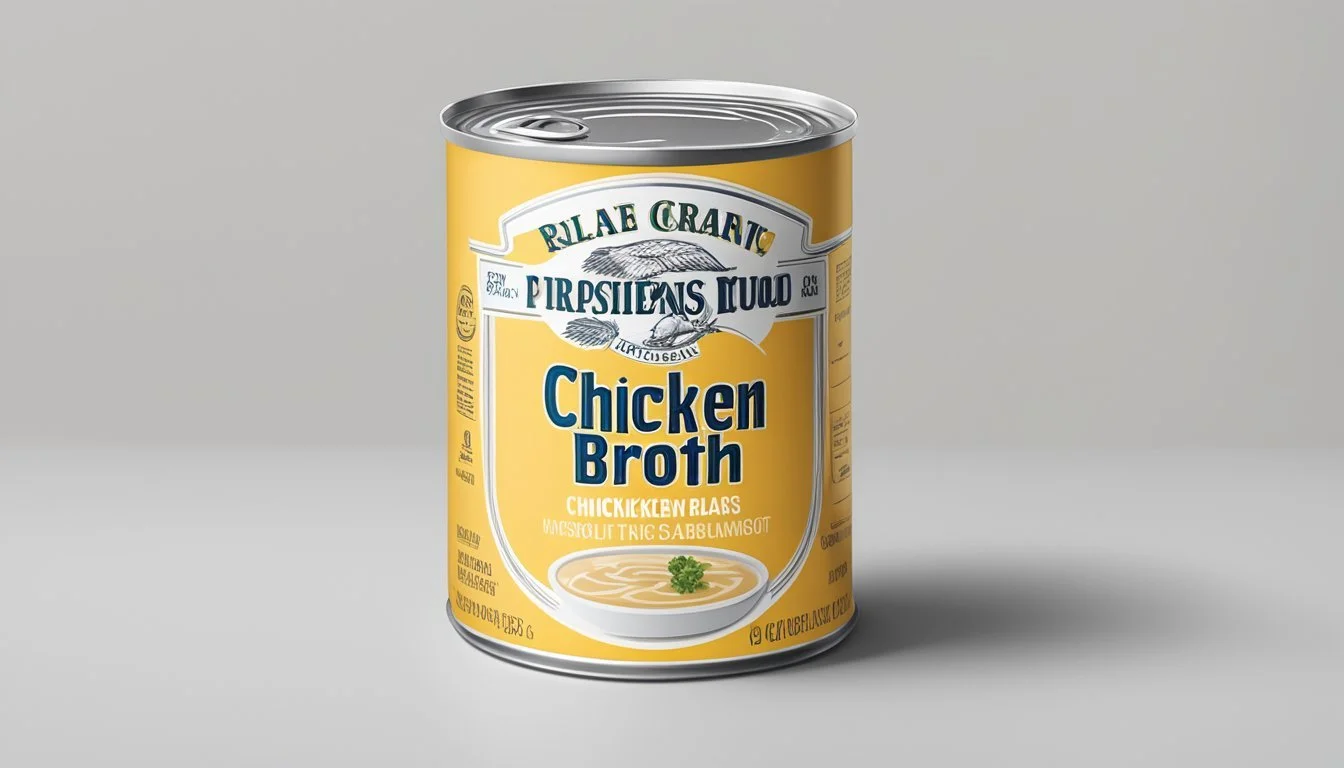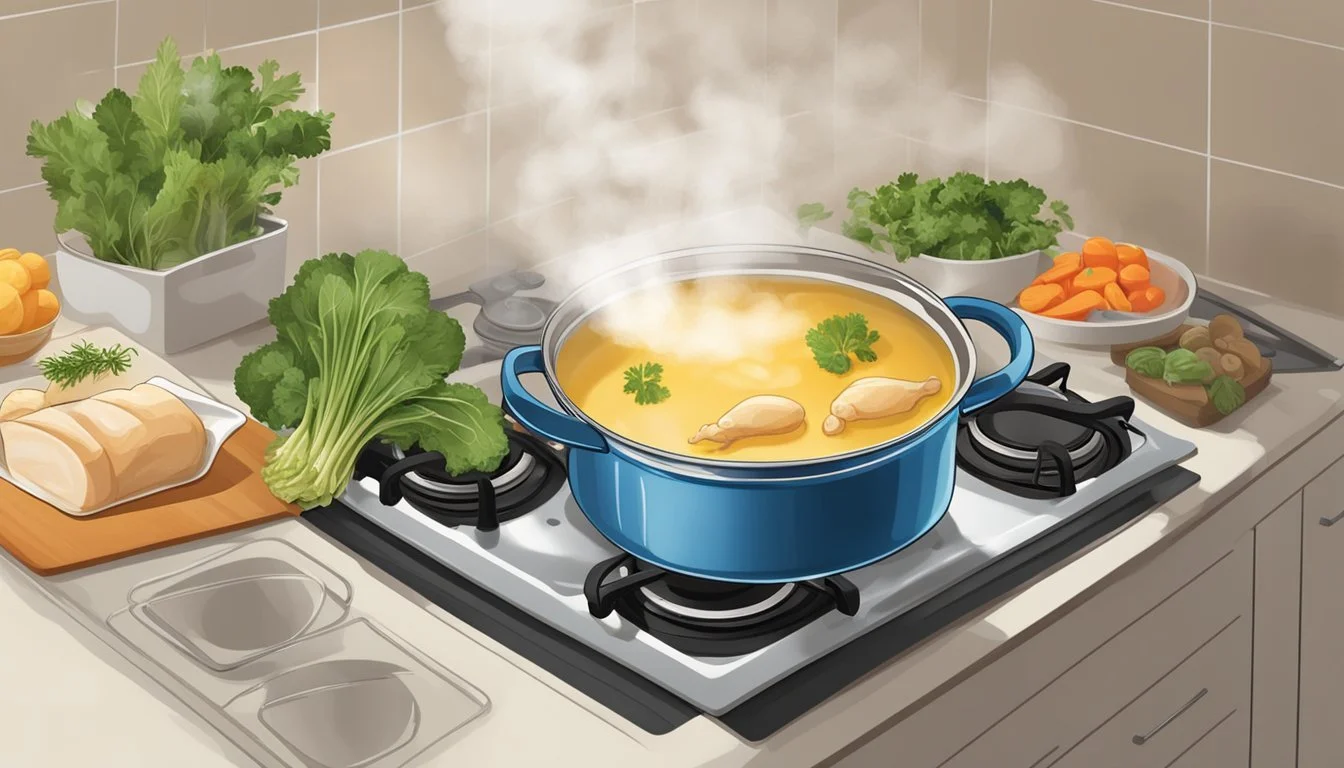How Many Ounces in a Can of Chicken Broth
Understanding Quantities
Understanding the quantity of chicken broth in a can is essential for cooks and chefs alike as it helps in precisely following recipes. A standard can of chicken broth typically contains 14.5 ounces of liquid. This measurement is important because it ensures that dishes have the correct consistency and flavor balance.
Cans of chicken broth are a staple in pantries because of their convenience and versatility. They can be used in a variety of recipes, ranging from soups and stews to risottos and gravies. Recognizing the standard size of a can helps in meal planning and ingredient shopping.
Knowing that a 14.5-ounce can converts to about 1.8 cups provides a foundational knowledge that simplifies kitchen math. This conversion is particularly useful since recipes often call for broth in cup measurements. It also allows for easy substitution when a recipe requires broth in varying quantities, potentially from different sized cans or other packaging like cartons or homemade stock.
Understanding Measurements in Cooking
Accurate measurements are crucial when it comes to replicating the success of a recipe. They ensure consistency and the intended taste, texture, and appearance of the dish.
The Importance of Accuracy and Consistency
In cooking, accuracy and consistency in measurements are vital. Liquid measurements are especially critical in recipes, as they affect the hydration, structure, and cooking times of dishes. Small deviations can lead to notably different outcomes, which is why measuring liquids precisely is important for the fidelity of the recipe's results.
Common Liquid Measurements Used in Recipes
Common liquid measurements within recipes include teaspoons (tsp), tablespoons (tbsp), fluid ounces (fl oz), and cups. Here is a quick reference for the standard liquid measures:
1 cup = 8 fluid ounces
1 fluid ounce = 2 tablespoons
1 tablespoon = 3 teaspoons
Recipes typically call for liquid ingredients in either teaspoons, tablespoons, cups, or a combination thereof, each serving their purpose for the quantity required.
Converting Fluid Ounces to Cups
Converting between fluid ounces and cups is essential for adapting recipes or when the only available measuring tool doesn’t match the recipe's requirements. The conversion is straightforward:
1 fluid ounce = 0.125 cups
To find out how many cups are in a can of chicken broth, typically containing 14.5 ounces, one would multiply the number of ounces by the conversion factor, resulting in 1.81 cups (rounded to two decimal places). This conversion ensures that one can follow the recipe accurately even when the volume of the liquid in the can is not directly in cups.
The Standard Size of a Can of Chicken Broth
The industry recognizes 14.5 ounces as the standard size for a can of chicken broth. This consistent sizing facilitates convenience for consumers and recipe standardization.
Size Varieties and Their Uses
Cans of chicken broth come in various sizes to cater to different culinary needs. The most common sizes available are:
10.5 ounces: Ideal for small recipes or individual servings.
14.5 ounces: The standard size, equivalent to about 1.8 cups, is versatile for most recipes.
32 ounces: Larger containers suitable for family-sized meals or meal prep.
Each size serves a specific purpose, from adding flavor to rice dishes to serving as the base for soups and stews.
Comparing Can Sizes to Homemade Broth Quantities
When substituting canned broth for homemade, it is important to understand the equivalent quantities:
1 cup homemade broth is approximately 8 ounces.
A standard can of broth has about 1.8 cups.
A 32-ounce can or container is equivalent to 4 cups of homemade broth.
This information aids in recipe conversion and maintaining the desired flavor and consistency when using either canned or homemade broth.
Chicken Broth as a Culinary Staple
Chicken broth is a dynamic and essential component in kitchens worldwide. It serves as a foundation for countless recipes, contributing to the depth of flavor and overall richness of culinary creations.
Versatile Ingredient for Various Dishes
Chicken broth is a versatile ingredient widely utilized in numerous dishes. It's a cornerstone for soups, where it provides a comforting and warm base. In sauces, chicken broth imparts a subtle yet profound flavor that enhances the dish's complexity without overwhelming other ingredients. Additionally, it's a critical fluid in casseroles, offering moisture and flavor which permeates through the layers of ingredients.
Soups: a foundational element for both hearty and light versions
Sauces: adds depth and aids in texture
Casseroles: acts as both a flavorful and hydrating component
Flavor Profile and Enhancements
The flavor profile of chicken broth is both mild and adaptable, making it a perfect medium for flavor enhancements. Herbs, spices, and vegetable mirepoix often accompany chicken broth in recipes to elevate its natural essence. The broth can serve not just as a cooking ingredient but also as a stock, which is a base from which other complex flavors can emerge in a culinary creation.
Mirepoix: Carrots, celery, and onions are standard for enriching the broth's flavor.
Herbs and Spices: Common additions include bay leaves, thyme, and peppercorns to tailor the broth's taste to the recipe's requirements.
Nutritional Information and Health Benefits
When discussing the nutritional information and health benefits of chicken broth, it's important to consider both homemade and store-bought varieties, as well as their sodium content. Additionally, the advantages of choosing homemade chicken broth, particularly in terms of health benefits, deserve attention.
Homemade Versus Store-Bought Chicken Broth
Homemade chicken broth typically contains natural ingredients such as chicken bones, vegetables, and herbs. This allows for better control over the sodium and nutritional content. In contrast, store-bought chicken broth often includes preservatives and flavor enhancers. A homemade broth tends to be richer in proteins and amino acids, which are vital for muscle repair and joint health.
Sodium Content in Canned Chicken Broth
The sodium content in canned chicken broth varies widely. Low-sodium options are available, offering healthier alternatives to regular versions. A typical can might contain around 37% of the daily value for sodium, so consumers should read labels carefully to manage their intake, especially if they have health concerns related to sodium.
The Benefits of Homemade Chicken Broth
Choosing to prepare homemade chicken broth can lead to significant health benefits. It is often lower in sodium, especially when no salt is added during preparation. Homemade options also generally provide a more balanced nutritional content, including vitamins and amino acids essential for overall health. They often contain more protein, which is pivotal for maintaining muscle mass and repairing tissues.
Preparing and Cooking with Chicken Broth
Chicken broth serves as a versatile liquid base in cooking that adds depth and flavor to a variety of dishes from soups to stews and sauces. Knowing how to prepare and utilize chicken broth in recipes can enhance both the taste and nutritional content of meals.
Different Ways to Incorporate Broth into Recipes
Chicken broth is a fundamental ingredient in culinary practices, providing moisture, flavor, and richness to dishes. It can be used in various ways:
Soups and Stews: As the primary liquid for creating a flavorful base.
Rice and Grains: In place of water to infuse the grains with more flavor.
Sauces: As a deglazing agent for pan sauces or as the foundational liquid of gravies.
Pasta: A small amount can be added to the boiling water to impart flavor to pasta.
Adjusting Recipes When Substituting Broths
Substituting chicken broth in recipes that call for different types of broth or stock often requires adjusting the flavor profile:
Salt Content: Consider the sodium levels, as broths vary in saltiness.
Flavor Intensity: Homemade broths may have a stronger flavor than store-bought cans; adjustments may be necessary to achieve the desired taste.
Herbs and Spices: Some broths include additional seasonings that can influence the overall flavor of the dish.
Cooking Time Variations with Chicken Broth
Using chicken broth can affect cooking times:
Braising and Simmering: Cooking with chicken broth in recipes like stews and braised dishes (What wine goes well with braised dishes?) can lengthen cooking times, as the broth should be given ample opportunity to impart flavor into the other ingredients.
Reduction: Chicken broth can be reduced to concentrate its flavor, but this requires additional cooking time to evaporate excess liquid.
Storage and Preservation of Chicken Broth
Storing chicken broth correctly is essential to maintaining its quality and ensuring safety. It involves consideration of temperature, proper containers, and understanding the deterioration timeline.
Properly Freezing and Thawing Chicken Broth
One can freeze chicken broth to extend its shelf life. To freeze, one should:
Pour the broth into ice cube trays or freezer bags.
Leave about an inch of space at the top to allow for expansion as the broth freezes.
To thaw chicken broth, one should:
Transfer the desired amount from the freezer to the fridge at least a day before needed.
For quicker thawing, submerge in cold water or thaw in the microwave, then use immediately.
Shelf Life and Handling of Canned Chicken Broth
Canned chicken broth can last:
Unopened, in the pantry, 1-2 years past the date on the label.
Once opened, up to 5 days in the refrigerator.
One should always:
Inspect cans for dents or rust before use.
Transfer leftovers to a sealed container in the fridge.
Extending Freshness Through Airtight Containers
Using airtight containers can preserve the quality of chicken broth. One should:
Decant leftover broth into clean, airtight containers.
Keep in the fridge for up to 5 days.
For long-term storage, move to the freezer where it can last up to 6 months.








